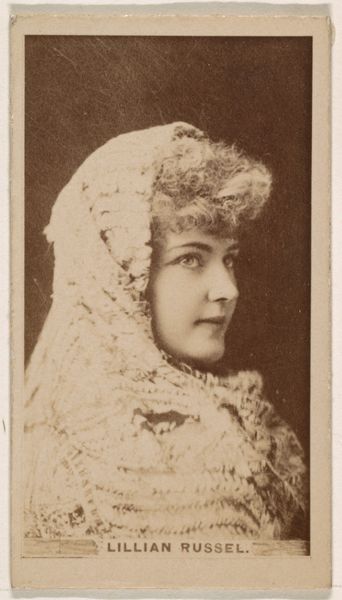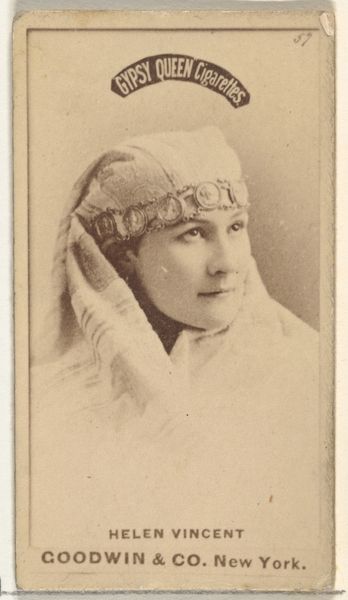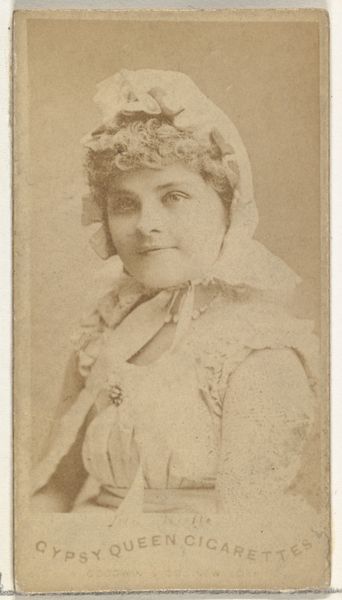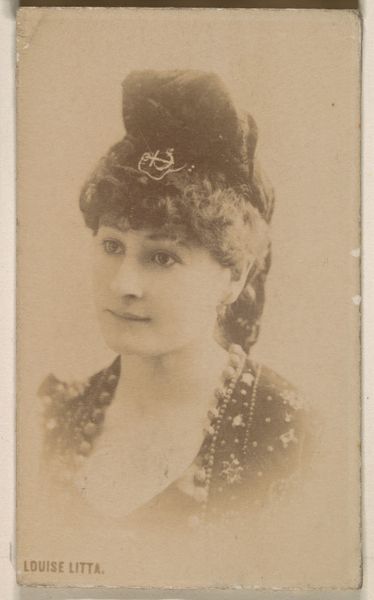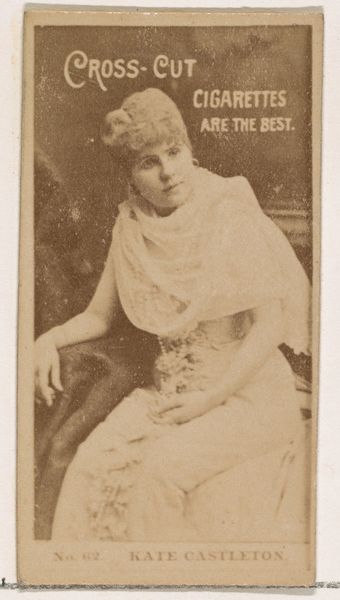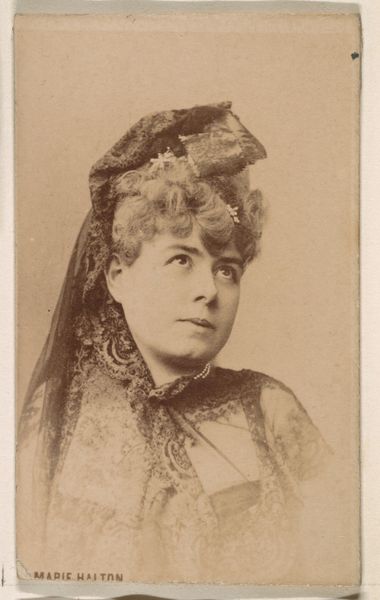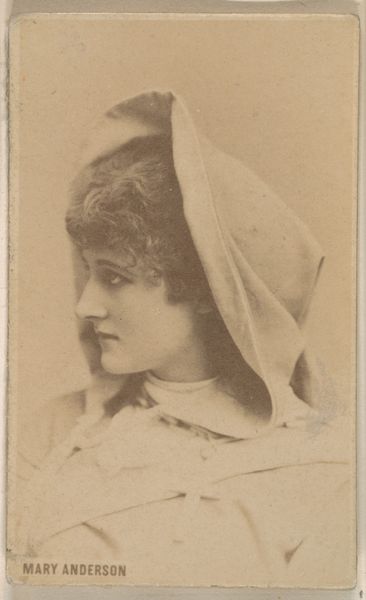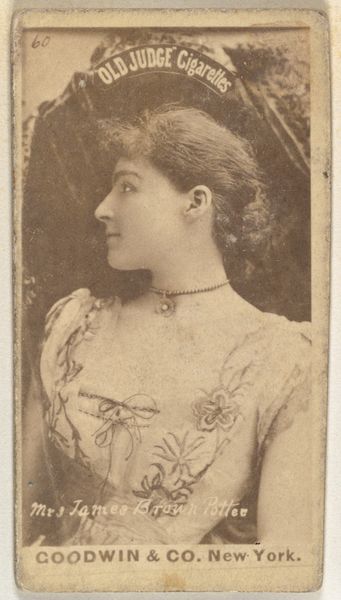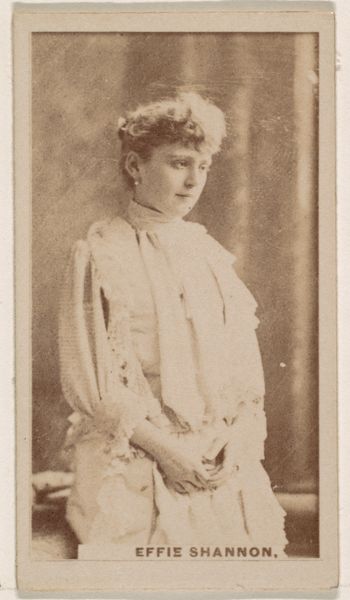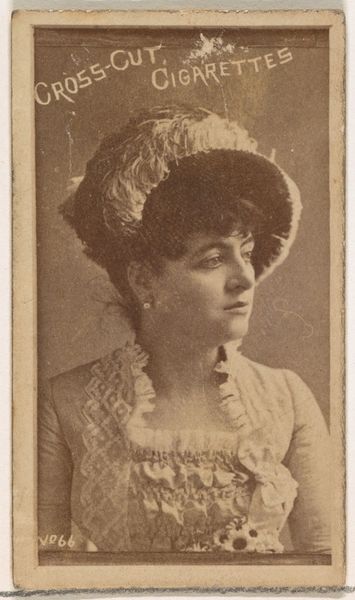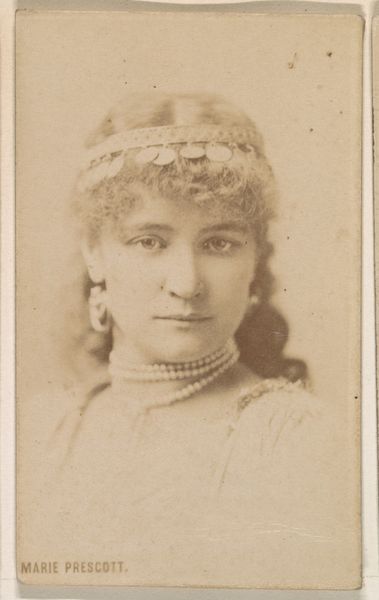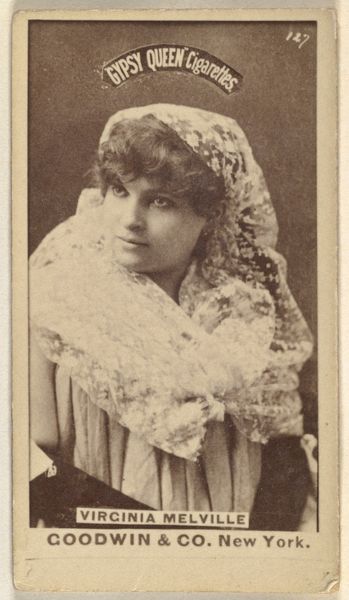
Card Number 578, Lillian Russell, from the Actors and Actresses series (N145-3) issued by Duke Sons & Co. to promote Cross Cut Cigarettes 1880s
0:00
0:00
drawing, print, photography
#
portrait
#
drawing
#
pictorialism
# print
#
photography
#
19th century
Dimensions: Sheet: 2 11/16 × 1 3/8 in. (6.8 × 3.5 cm)
Copyright: Public Domain
Editor: So this piece, "Card Number 578, Lillian Russell," from the 1880s, it's part of the Actors and Actresses series sponsored by Cross Cut Cigarettes. It’s really more like a promotional card than a traditional drawing or photograph. I’m struck by how deliberately posed she looks; it feels like celebrity culture already taking root. What’s your read on this image, considering its purpose and context? Curator: It’s fascinating how even something seemingly simple like a cigarette card can be deeply embedded in the social fabric of the time. Think about it: the rise of mass media, the burgeoning cult of celebrity, and the aggressive marketing tactics of the tobacco industry. Lillian Russell was a star, and her image was being used to sell a product. It reflects the increasing commercialization of fame and beauty, doesn't it? What does the specific pairing of a female celebrity with cigarettes suggest to you about the target audience and the message being conveyed? Editor: I guess it hints at aspiring to a glamorous lifestyle, associating smoking with beauty and success. Was there any criticism at the time of using actresses in this way? Curator: Absolutely. While these cards boosted popularity, there was growing debate about the exploitation of images for commercial gain and the potentially harmful associations being created, particularly for young women. Think about the power dynamics at play—the companies profiting from these images versus the agency the actresses had in controlling their own representation. Editor: That's something I hadn't really considered before, the power imbalance inherent in these types of promotions. I just thought of it as vintage advertising. Curator: It’s crucial to see beyond the surface and analyze the social and political forces shaping art, even these ephemeral commercial pieces. Hopefully it enriches our understanding of the image. Editor: It definitely does. Seeing it as a social artifact makes it way more complex and interesting. Thanks for pointing that out!
Comments
No comments
Be the first to comment and join the conversation on the ultimate creative platform.
